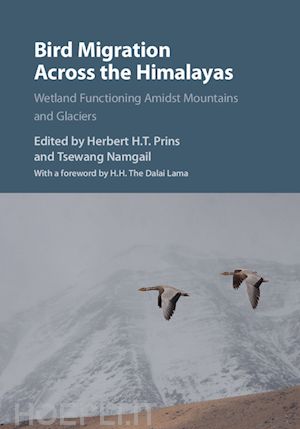Forward; Preface; Introduction; Part I. Migratory Routes and Movement Ecology: 1. Goose migration across the Himalayas: migratory routes and movement patterns of bar-headed geese; 2. Himalayan thoroughfare: migratory routes of ducks over the rooftop of the world; 3. Migratory routes across the Himalayas used by Demoiselle Cranes; 4. Passerine migration across the Himalayas; 5. Wader migration across the Himalayas; 6. Raptor migration across and around the Himalayas; 7. Steppe Eagle migration from Mongolia to India; 8. Peregrine Falcons crossing the 'Roof of the World'; Part II. Physiography of the Highest Barrier on Earth: 9. Geological origin and evolution of the Himalayas; 10. Late Quaternary glacier fluctuations in the Himalayas and adjacent mountains; 11. The influence of hydrology and glaciology on wetlands in the Himalayas; 12. The Himalayan vegetation along horizontal and vertical gradients; 13. Assessing the evidence for changes in vegetation phenology in high altitude wetlands of Ladakh (2002–2015); Part III. High-Altitude Migration Strategies: 14. The wind system in the Himalayas: from a bird's-eye view; 15. Birds, gliders and uplift systems over the Himalayas; 16. Goose migration over the Himalayas: physiological adaptations; 17. Distance-altitude trade off may explain why some migratory birds fly over and not around the Himalayas; 18. Refuelling stations for waterbirds: macroinvertebrate biomass in relation to altitude in the Trans-Himalayas; 19. The Himalayas as an ecological barrier for avian migrants: high and dry, but also dangerous?; 20. Bird species diversity on an elevational gradient between the Greater Himalaya and the Tibetan Plateau; Part IV. People and their Effects on the Himalayas: 21. Evidence of human presence in the Himalayan mountains: new insights from petroglyphs; 22. Pastoralism and wetland resources in Ladakh's Changthang plateau; 23. Impacts of tourism and military presence on wetlands and their avifauna in the Himalayas; 24. Birds in relation to farming and livestock grazing in the Indian Trans-Himalaya; 25. Migratory ducks and protected wetlands in India; 26. A network of small, dispersed Himalayan wetlands suitable for designation under the Ramsar Convention; Part V. Conclusions: 27. Bird migration across the Himalayas and beyond: the need for better conservation and management of a natural wonder; Appendix. Locations (places, mountains, rivers, etc.) mentioned in the chapters and their geographic coordinates.











